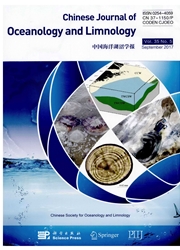

 中文摘要:
中文摘要:
根据 TOC, TN, C/N,器官的δ ~(13 ) C 和粒子大小上的多代理分析,自从 16 ka BP,从金海·莱克的沉积记录提供逐步有图案的气候变化的证据。结果证明金海·莱克经历了六个环境阶段。从 16.2to 14.3 ka BP 并且从 4.0 ~ 2.1 ka BP,器官的δ ~(13 ) C 价值被大气的 CO_2 的集中控制。相对更高器官的δ ~(13 ) C 价值发生在水坚硬减少的 14.3 to10.4 ka BP 陈述语气之间源于融化冰水,相应于到 Boeling 和 Al-leroed 的 C/N 山峰价值的二间隔在欧洲的温暖的时期分别地。从 10.4 ka BP,金海·莱克进入了全新统,气候温暖、有点干燥。当在湖附近的植被转变了成时, TheMegathermal 出现在大约 6.7 ka BP 最在前。在 6.3 ka BP 和 4.0 ka BP 之间,温度减少了,δ ~(13 ) C 价值被 C_3 植物的扩大和 C_4 植物的撤退在河集水控制。自从 4.0 ka BP,气候逐渐地变得冷、干燥。从 2.1 ka BP,寒冷干燥的气候和人的活动与 C 珍视的死亡δ ~(13 ) 导致了 C/N 的突然的增加;同时,许多粗糙的谷物出现在沉积。
 英文摘要:
英文摘要:
On the basis of multi-proxy analysis on TOC, TN, C/N, organic δ^13C and grain size, sediment record from Qinghai Lake provides evidences of stepwise-pattemed climatic change since 16 ka BE Results show that Qinghai Lake underwent six environmental stages. From 16.2 to 14.3 ka BP and from 4.0 to 2.1 ka BP, the organic δ^13C value was controlled by the concentration of atmospheric CO2. Relative higher organic δ^13C values occurred between 14.3 to 10.4 ka BP indicative of water hardness decrease resulted from melting ice water, corresponding to two intervals of C/N peak values to the Boling and AIlerod warm periods in Europe respectively. From 10.4 ka BP, Qinghai Lake entered the Holocene and the climate was warm and a little dry. The Megathermal appeared at about 6.7 ka BP when the vegetation around the lake transformed into a forest. Between 6.3 ka BP and 4.0 ka BP, the temperature decreased and δ^13C value was controlled by the expansion of C3 plants and the retreat of C4 plants in river catchment. Since 4.0 ka BP, the climate gradually became cold and dry. From 2.1 ka BP, the cold-dry climate and human activity resulted in an abrupt increase in C/N with deceased δ^13C value; meanwhile, many coarse grains appeared in sediments.
 同期刊论文项目
同期刊论文项目
 同项目期刊论文
同项目期刊论文
 期刊信息
期刊信息
